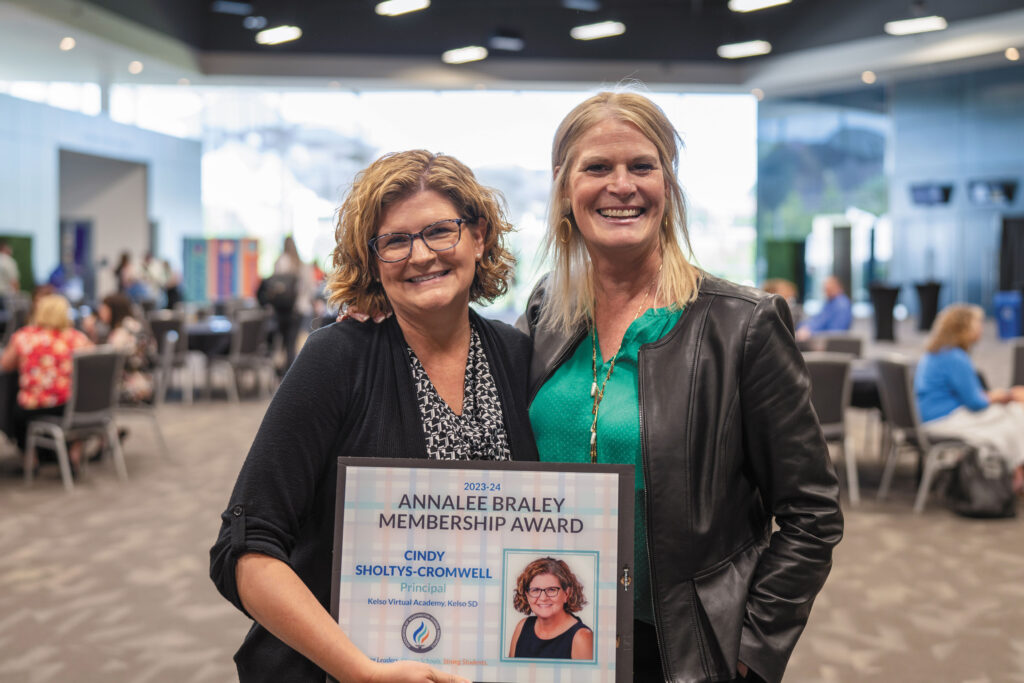Advocacy Agenda: January 2025

As an abundance of research continues to highlight the important role school leaders play in our schools, why doesn’t the system illustrate that same value? Why isn’t there a uniform and consistent approach across the country to grow, support, and sustain school leaders? Why does leadership support vary so much from state to state? And, if leadership matters, shouldn’t membership in a state and national professional association be a crucial support mechanism?
As the executive director of the Association of Washington School Principals (AWSP), the most common question I’m asked by my colleagues around the country is, “How do you maintain nearly 100% membership of your state’s principals and assistant principals annually?” That is a great question requiring a complicated and multifaceted response, and one I’ll tackle through the lenses of “Culture, Systems, and Learning,” three foundational principles of the School Leader Paradigm and the professional learning we do with our own K–12 members.
CULTURE: We’ve advocated for a statewide culture that values our school leaders while working diligently to become the association that provides their direct support.
- Our association consistently promotes and highlights the value of principal and assistant principal leadership. (For instance, we often point to the Wallace Foundation research on school leaders.)
- We foster ongoing relationships with policymakers in our advocacy efforts locally, regionally, and nationally.
- AWSP is viewed as an equal partner in statewide leadership with other agencies and organizations.
- Our state’s department of education leans on AWSP to be a mainstay of principal support.
- AWSP leaders many decades ago built a solid foundation and culture for us to build upon.
- We constantly assess, monitor, and adjust our benefits, resources, and priorities to reflect the needs of our members and create a high return on investment in membership.
- We are not a union or a state agency but have a similar presence and influence while partnering with districts, not working against them.
- We’ve developed highly regarded and nationally sought-after student programs focused on race, equity, student voice, leadership, and school culture.
SYSTEMS: We’ve worked hard to maintain key systems on an annual basis that streamline the process of membership renewal for our members, our staff, and the national associations.
- We have a membership coordinator whose primary focus is securing membership with each of our 295 school districts.
- Relationships, relationships, relationships. That coordinator works diligently to maintain a point of contact and relationship with each and every district in our state—every year.
- The membership process is simplified with one payment that includes both the state and national dues for the confirmed list of all the leaders in the district.
- We’ve worked hard to have language in local principal contracts to include paying AWSP membership dues.
- We provide direct support to school leaders through and with school districts.
- Many of our state’s superintendents were once members of AWSP and value the return on investment for their leaders.
- We’ve placed key AWSP staff regionally across the state to increase our presence and access to members.
- We leverage our regional Grade Level Leadership Committees for feedback and support directly from the field.
LEARNING: We’ve made a direct effort to insert ourselves into the entire continuum of leadership development and professional learning, starting with our students as future leaders.
- We start early in leadership development by engaging our elementary, middle, and high school students in our programs.
- We run our state’s Outdoor Schools WA programs, many of which take place at our very own Cispus Learning Center at the foot of Mt. Rainier.
- We develop relationships with future leaders by facilitating via state contracts and in partnership with university preparation programs our state’s internship grant for aspiring leaders.
- We run a cohort-based professional learning series for all aspiring leaders regardless of their university preparation affiliation.
- We re-introduce ourselves to every new leader hired in the system with regularly scheduled “New Member Zoom Check-Ins.”
- Many years ago, we wrote and published The AWSP Leadership Framework, the state-adopted framework for principal evaluation.
- We provide an eight-part “Empowering Excellence” leadership development series in districts for all leaders.
As you can see, striving for and maintaining nearly 100% association membership is a combination of creating a statewide culture that values membership, building statewide systems that support the ongoing renewal of membership, and serving as the statewide provider for ongoing professional learning for all current and future members. High membership rates pave the way for us to provide incredible resources and support for leaders across our entire state.
Whether our associations have 40% or 100% membership, we should all be sounding the alarm about the school leadership crisis across the country. We need new systems and approaches to grow, support, and sustain our school leaders.
Where should you start? A recent policy brief released by the University of Washington on the impacts of principal retention and turnover in the system says, “Ensuring all students have access to stable, high-quality school leadership is a shared responsibility of district leaders, regional service providers, and state education leaders.”
We are in this together. Leadership matters and so does association membership.
Scott Seaman, EdD, is the executive director of the Association of Washington School Principals. Previously, he was the principal of Tumwater High School in Tumwater, WA.
References
Grissom, J.A., Egalite, A.J., & Lindsay, C.A. (2021). How principals affect students and schools: A systematic synthesis of two decades of research. The Wallace Foundation. wallacefoundation.org/principalsynthesis.
Knight, D.S., Candelaria, C.A., Sun, M., Almasi, P., Shin, J., & DeMatthews, D. (2023, December). Principal retention and turnover during the COVID-19 era: Do students have equitable access to stable school leadership? University of Washington. digital.lib.washington.edu/server/api/core/bitstreams/39656210-3616-4377-9918-ea9a46b91fe5/content
